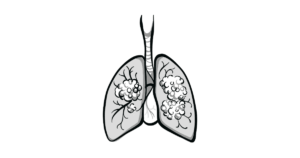
Probiotics are gaining traction as essential tools in neonatal intensive care units across the United States, where they are used to promote healthy outcomes and prevent intestinal diseases like necrotizing enterocolitis. Currently, approximately one in ten of the youngest preterm infants in the U.S. receive probiotic treatments, and research indicates that these therapies can significantly reduce overall mortality rates.
Central to these treatments are bacterial strains from the Bifidobacterium genus, which are particularly abundant in the guts of breastfed children and are considered highly beneficial to human health. “Bifidobacteria confer multiple positive properties, beginning with inhibiting the growth of pathogenic bacteria by outcompeting them for space and nutrients,” noted Aleksandr Arzamasov, PhD, a postdoctoral associate at Sanford Burnham Prebys. “They also help with the development of an infant’s immune system.”
Probiotics and Malnutrition: A Global Perspective
Scientists have been exploring the use of probiotics to deliver the benefits of Bifidobacterium to infants suffering from malnutrition. Recent studies in Bangladesh revealed that probiotic treatments in infants with severe acute malnutrition encouraged weight gain. However, the anticipated permanent establishment of beneficial bacteria in the infants’ microbiomes, as observed in U.S. studies, did not occur.
“We wondered if the strain was less effective because it was not adapted to the local diets of Bangladeshi children,” explained Andrei Osterman, PhD, a professor in the Center for Data Sciences at Sanford Burnham Prebys. “And we thought we may be able to predict which strains will thrive in different conditions, allowing us to match probiotics to children based on where they live and what they eat.”
Genomic Insights: Mapping Bacterial Adaptations
Osterman, Arzamasov, and their colleagues from Washington University School of Medicine, Sabanci University, and the University of California San Diego published groundbreaking findings on July 16, 2025, in Nature Microbiology. Their research demonstrated the ability to predict the nutritional adaptations of Bifidobacterium strains by analyzing the distribution of hundreds of metabolic genes across thousands of genomes.
The study involved defining the metabolic genes that enable Bifidobacterium to break down specific carbohydrates for energy. “When we eat food, many of the dietary carbohydrates are not digested by our bodies, especially the more complex fibers,” said Arzamasov, the lead author. “Instead, they go straight to the large intestine where they can be metabolized by gut bacteria.”
By analyzing 263 Bifidobacterium genomes and integrating data from hundreds of studies, the team reconstructed 68 metabolic pathways, determining if a bacterium could digest specific carbohydrates.
These findings were extended by training an AI-based model to analyze over 2,800 additional genomes, predicting the ability to metabolize each of the 68 identified glycans. The accuracy of these predictions was validated through experiments on 30 geographically diverse strains, achieving a prediction accuracy rate exceeding 94 percent.
Implications for Personalized Probiotics
The study uncovered significant differences in carbohydrate utilization based on geographic location, diet, and lifestyle. For instance, Bifidobacterium strains from Bangladeshi children displayed unique capacities to digest both human milk carbohydrates and plant fibers, suggesting adaptation to dietary changes as infants transition from milk to solid foods.
“We found that these Bangladeshi isolates have unique gene clusters and unique metabolic phenotypes not found in any other genomes of strains isolated from other parts of the world,” Arzamasov stated. “This reinforces the importance of studying gut microbiomes in understudied populations worldwide in a culturally sensitive way, as they have unique biological diversity which is currently underappreciated.”
By illustrating how carbohydrate metabolism strategies vary across Bifidobacterium species and are influenced by ecological factors, the researchers have provided a critical resource for the development of personalized probiotics. “With this encyclopedia of sugar utilization pathways, you can now confidently predict which nutrients support their growth,” Osterman explained. “This knowledge can guide the rational development of supplementary foods to enhance the effectiveness of probiotic strains.”
Future Directions and Research Opportunities
The study, co-authored by Jeffrey Gordon, MD, and supported by the National Institutes of Health and the Bill & Melinda Gates Foundation, opens new avenues for research into personalized probiotics tailored to specific dietary and environmental conditions. The research team envisions that their findings will lead to more effective probiotic treatments, particularly in regions with unique dietary practices.
As the scientific community continues to explore the vast potential of probiotics in promoting health, the insights gained from this study underscore the importance of understanding the complex interactions between diet, microbiomes, and human health. This knowledge not only enhances our ability to tailor probiotics to individual needs but also highlights the broader implications of personalized nutrition in global health contexts.






